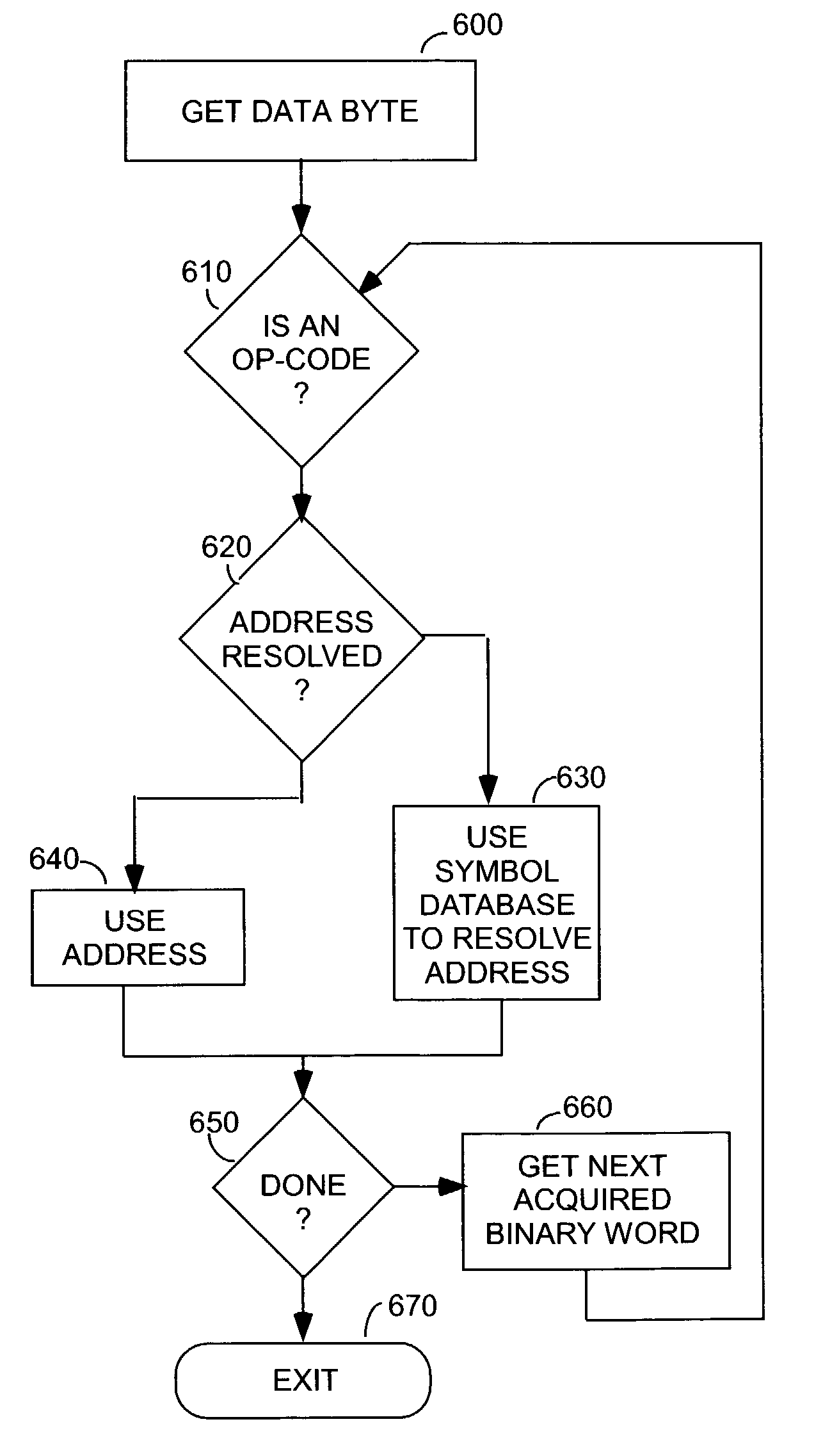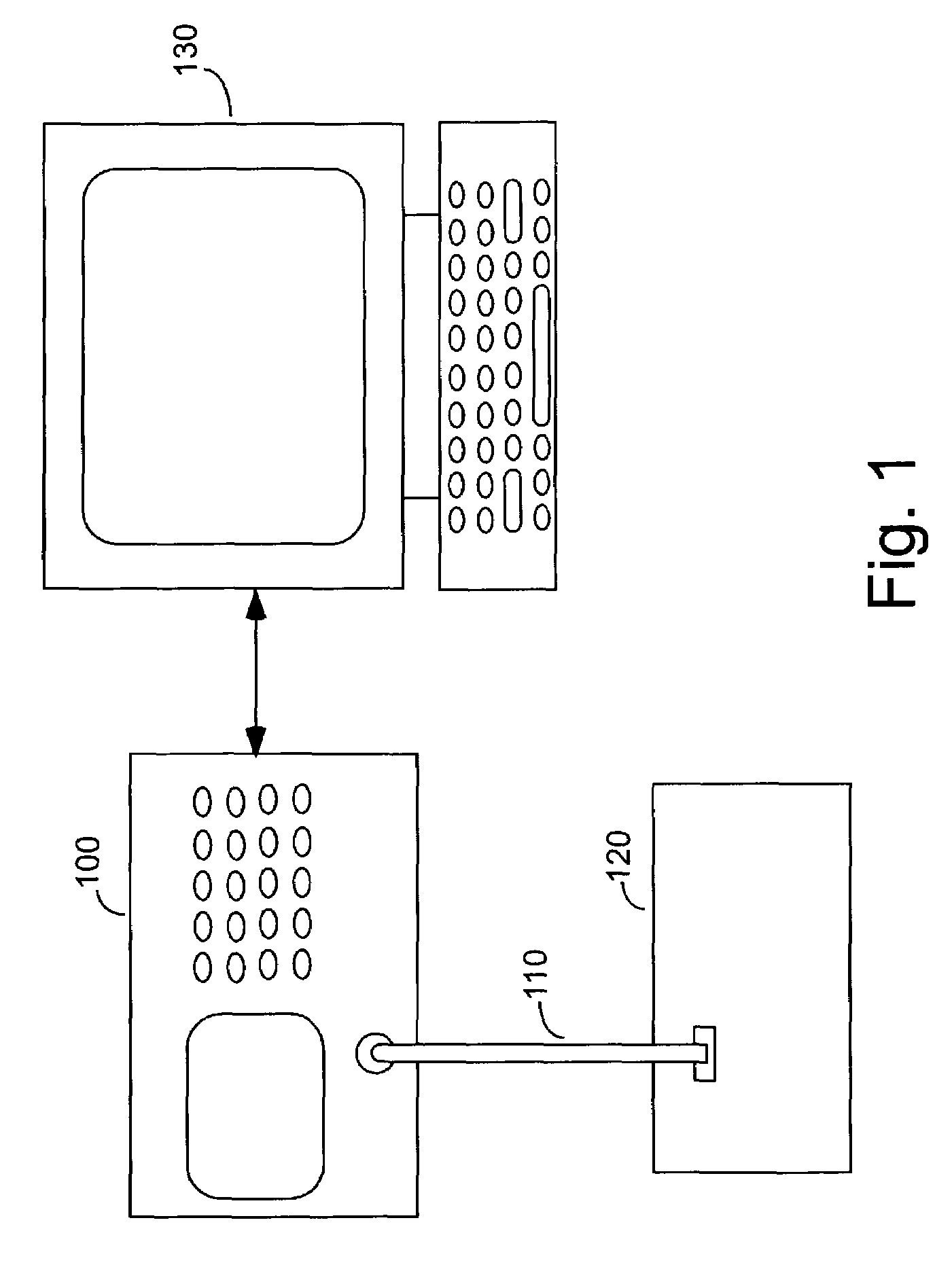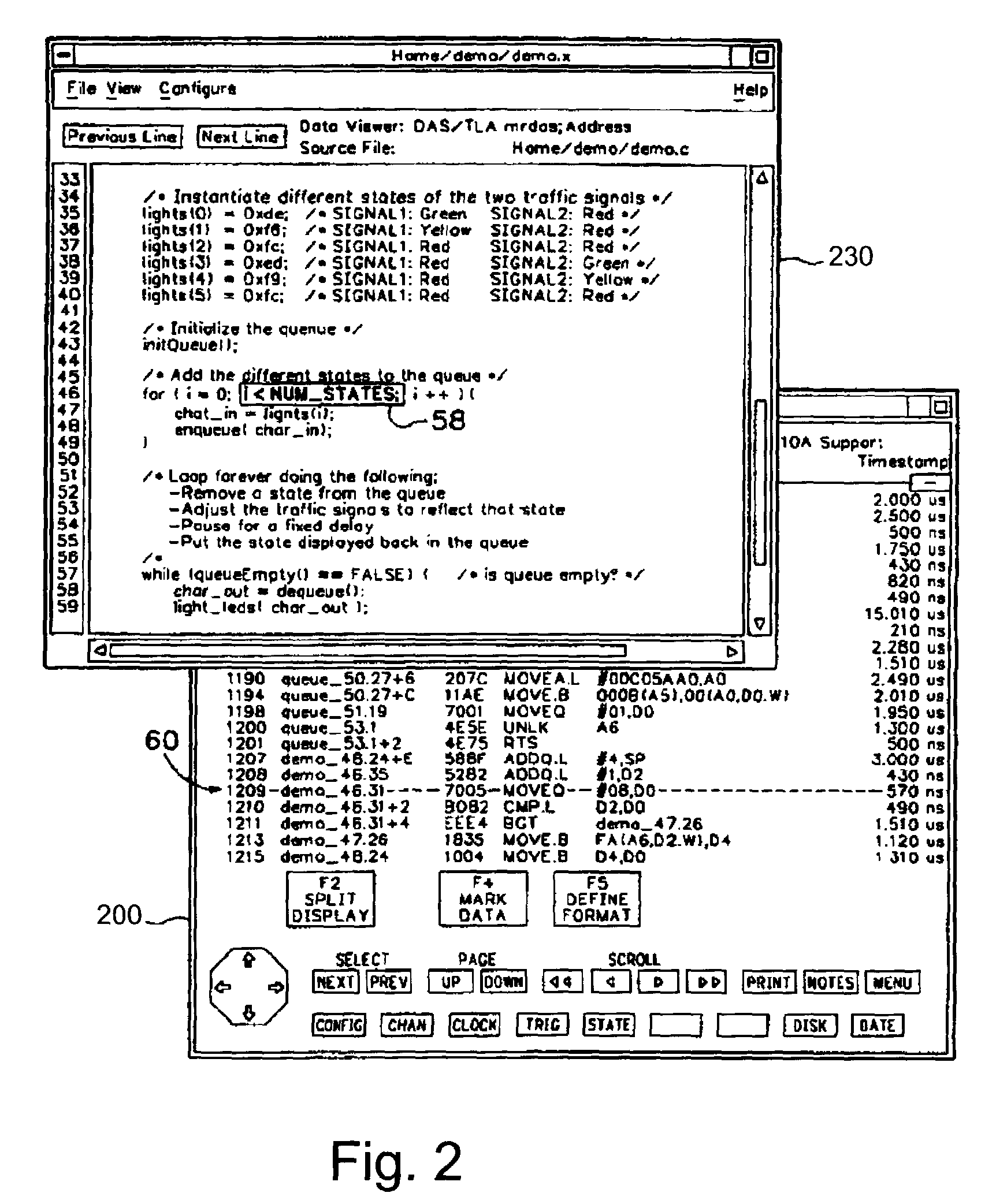Logic analyzer having a disassembler employing symbol table information for identifying op-codes
a logic analyzer and symbol table technology, applied in the field of disassembly of logic analyzers, can solve problems such as the inability of engineers to understand the exact operation of the system, and the inability of engineers to write software in assembly languag
- Summary
- Abstract
- Description
- Claims
- Application Information
AI Technical Summary
Problems solved by technology
Method used
Image
Examples
Embodiment Construction
[0017]Referring to FIG. 1, a logic analyzer 100 is coupled to a system under test 120 (also known as a “target system”, or simply “target”) by a cable and probe arrangement 110 for receiving binary signals corresponding to transactions appearing on the bus of the target system. One skilled in the art will quickly realize that cable and probe arrangement 110 is shown in a highly simplified manner, and in reality, may encompass a multitude of cables and probes coupled to hundreds of test points. Logic analyzer 100 may also be coupled to, and communicate with, a computer system 130, or may operate in a stand-alone mode.
[0018]Referring to FIG. 2, a screen display 200 of logic analyzer 100 is overlaid by a screen display 230 of computer 130. Individual portions of these screen displays are highlighted to show a correspondence of a line of assembly code 60 of a program running on target system 120 with a particular line of high-level source code 58 of that same program. It is important to...
PUM
 Login to View More
Login to View More Abstract
Description
Claims
Application Information
 Login to View More
Login to View More - R&D
- Intellectual Property
- Life Sciences
- Materials
- Tech Scout
- Unparalleled Data Quality
- Higher Quality Content
- 60% Fewer Hallucinations
Browse by: Latest US Patents, China's latest patents, Technical Efficacy Thesaurus, Application Domain, Technology Topic, Popular Technical Reports.
© 2025 PatSnap. All rights reserved.Legal|Privacy policy|Modern Slavery Act Transparency Statement|Sitemap|About US| Contact US: help@patsnap.com



